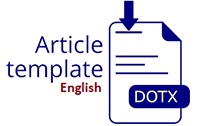LANGUAGE IMPOLITENESS IN JAKARTA LAWYERS CLUB TALK SHOW 2014
Abstract
Full Text:
PDFReferences
Bogdan, R. & Biklen, S. 2010. Qualitative Research
forEducation: An
Introduction to Theory and Methods. Boston: Allyn and Bacon.
Brown, H. D. 2007. Principles of Language Learning and Teaching: FifthEdition.
New York: Pearson Education.
Brown, P. & Levinson, S. 1978. Universals in Language Usage: PolitenessPhenomena.
In E. N. Goody. Question and Politeness Strategies in Social Interaction, pp. 56311.
Cambridge University Press.
Brown, G. & Yule, G. 1983. Discourse Analysis. Cambridge: Cambridge University
Press.
Bousfield, D. 2007. Beginnings, Middles and Ends: A biopsy of the dynamics of impolite
exchanges. Journal of Pragmatics, 39 (12), 2185–2216.
Bousfield, D. 2008. Impoliteness in Struggle for Power in Bousfield, D & Locher (eds.),
M. Impoliteness in Language–Studies on its Interplay with Powerand Practice. Berlin:
Mouton de Gruyter.
Culpeper, J. 1996. Towards An Anatomy of Impoliteness. Journal of Pragmatics, Volume
, Issue 3, 349-367.
Culpeper, J., Bousfield, D., & Wichmann, A. 2003. Impoliteness Revisited: With Special
Reference to Dynamic and Prosodic Aspects. Journal ofPragmatics, 35, 1545–1579.
Culpeper, J. 2005. Impoliteness and Entertainment in the Television Quiz Show:
The Weakest link. Journal of Politeness Research, 1, 35–72.
Culpeper, J. 2008. Reflections on Impoliteness, Relational Work and Power in Bousfield,
D & Locher (eds.), M. Impoliteness in Language–Studies onits Interplay with Power and
Practice. Berlin: Mouton de Gruyter.
Fasold, R. 1990. The Sociolinguistics of Language. Oxford: Blackwell.
DOI: https://doi.org/10.36987/ecobi.v4i2.89
Refbacks
- There are currently no refbacks.

